|
I'd have to say that peeler and soft crabs are likely the
number 1 bait for catching sea fish in the East Neuk,but they can be difficult to find for the beginner and expensive to buy.
Therefore lugworm are probably the best general bait for sea fishing for one or two reasons. Firstly,they are relatively easy
to get hold of by digging in sand and mud flats,and secondly most fish will be quite happy to eat them.
Lugworm live in burrows in sand and mud in pretty much any areas between the mid
water and low water tidal lines. They can be anything from 6 inches to 3 feet down depending on many factors including time
of year,weather,temperature and sea state.
The areas they live in can easily be identified as they leave sandy deposits on the
surface as they tunnel around under the sand.
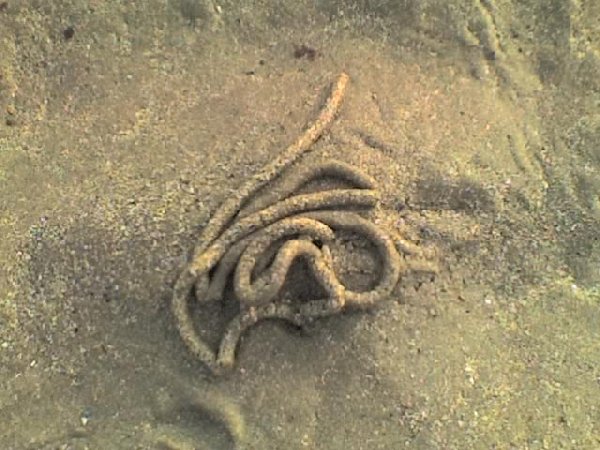
Lugworm can often leave a cast and nearby a blowhole. The
theory is that the worm lies in a 'U' shaped burrow between the cast and the blowhole.

If you dig between the two,you should find the worm.
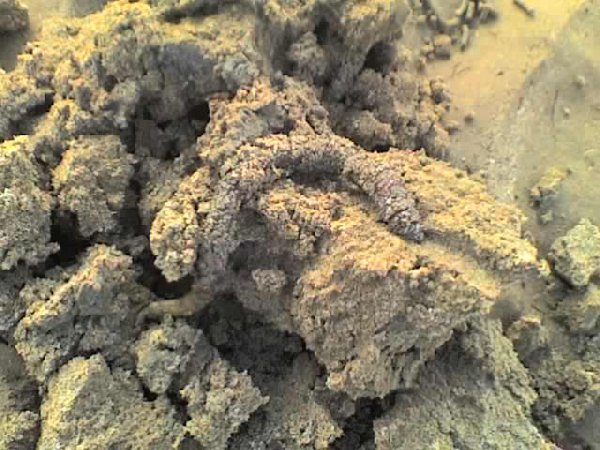
When you find these worm "casts",all you need to do is to
dig with a sturdy garden fork and simply be willing to put in the time and effort necessary. Sometimes this may not be much
effort at all,while other times you can spend an hour or two just getting a handful of worms to fish with. As with most aspects
of fishing though,experience will soon make the choice of spots and the effort required,much easier.
Size-wise lugworm
need to 4 inches or so minimun to be any use,but can grow to the teens of inches as shown in the next picture. They come in
a couple of different types and you''ll likely hear mention of blow lug,yellow tail lug and black lug when reading angling
articles,but in the East Neuk I'm pretty sure that any lug you find can just be simply referred to as "Lug",and be really
good fishing bait which is all that matters.
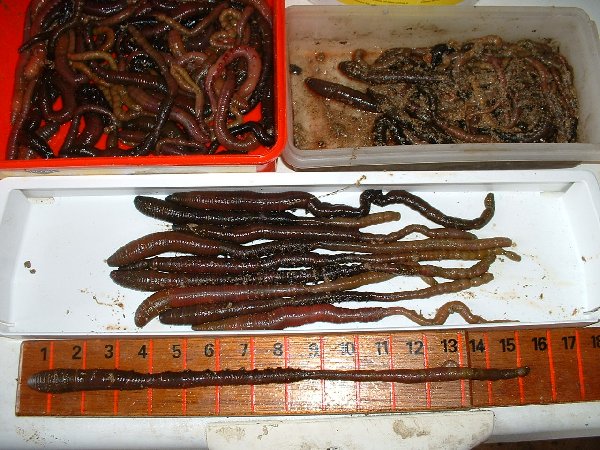
Probably the difficult bit for novice anglers is simply how to keep your hard dug lugworm
alive for more than a couple of days. They do not like heat,and will soon die if just left in a bucket somewhere in the back
garden. Keeping your worms cold is the answer to keeping them alive,and there are a couple of ways of doing this.
In an ideal world,you would have an old fridge in your shed or garage to store your
bait,but if you don't then an empty ice cream tub and some newspaper will let you store them in the kitchen fridge without
any danger of contaminating your food.
When you have dug your worms,it's a good idea to wash them off in a rock pool to get
most of the sand off them. A good way of doing this is to buy a collander from the supermarket and always take this with you
when bait digging to wash your lug.
When you get home cut some newspaper into the shape of your margarine tub and simply
put half a dozen layers in the bottom of the tub,followed by half a dozen worms,then more paper,more worms,etc until the tub
in just short of full. Do not fill the tub full then squash the lid on,and do not press each layer down as this will
kill some worms. Put them in loosely, and if you need to,just take another tub. Worms stored like this in the fridge
should last up to a week.
If you have a seperate fridge,you can use trays such as cat litter trays and store them
in shallow sea water hardly covering the worms, but you must change the water every day or two. The water should
be stored in the same fridge to keep the temperature the same,and this can be easily done using empty drinks bottles. As you
change the water, remove any dead or suspect worms, and then replace the used water bottles with fresh ones to cool for the
next change. This method will keep your worms the longest,but easy access to fresh sea water is needed,as is a bit of time
and effort. Before you use your worms when stored in this way,it's a good idea to take them from the water and leave in the
fridge on a good few layers of newspaper to help them drain off some of the water which they will have ingested. If you don't
do this,the worms can sometimes be a bit watery when you hook them.
My own preferred method is just to use the trays but no water. I place 20 or 30 worms
in each tray and just leave them stacked in the fridge.This method will store the worms for a week, but requires no effort,
and as I do not need them to last more than a week works fine for me.
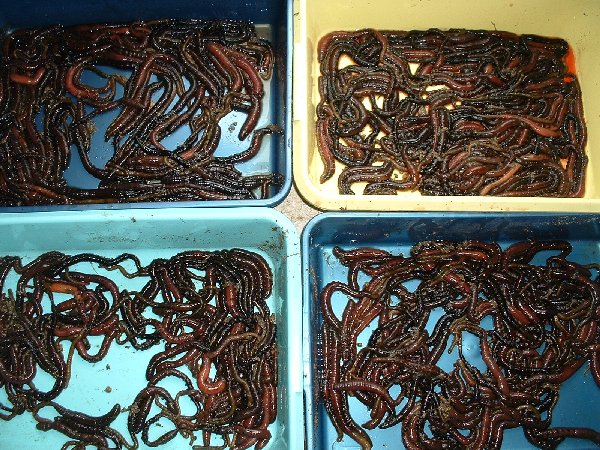
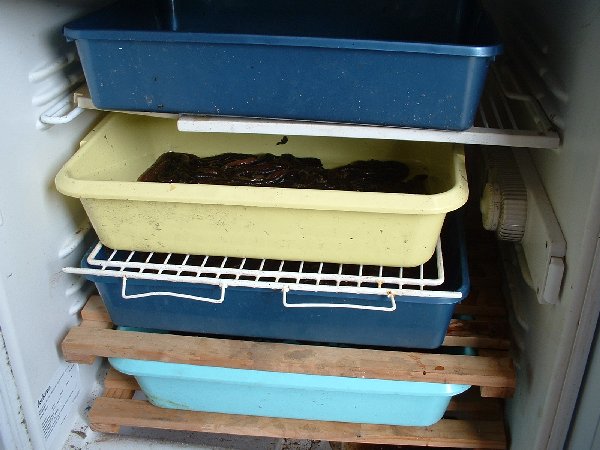
Lugworms are very easy to bait up on the hook.Simply insert
into the mouth end of the worm and slide it up over the hook. This can be made easier with the use of the bait needle,particularly if
the worms are smallish and you want to put 3 or 4 on the hook.
Firstly insert the pointed end of the needle into the mouth of the worm.
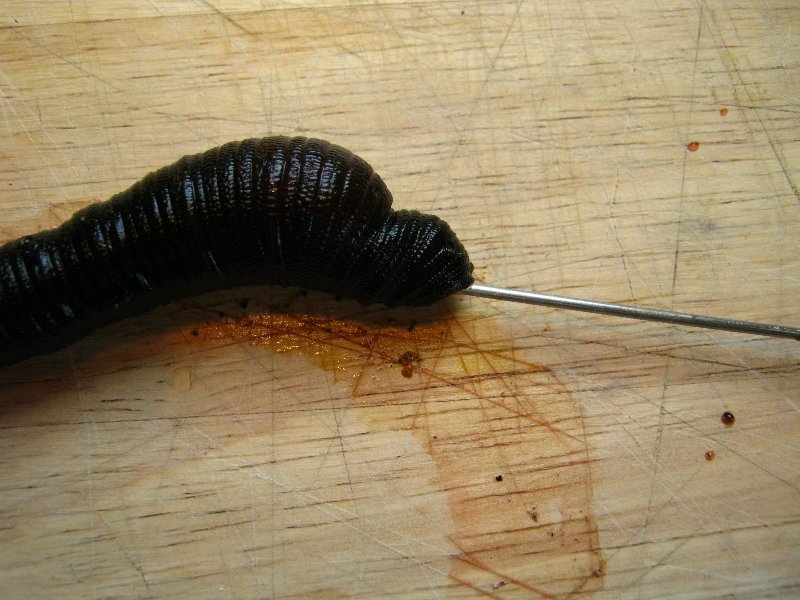
Then slide the needle right through the worm.
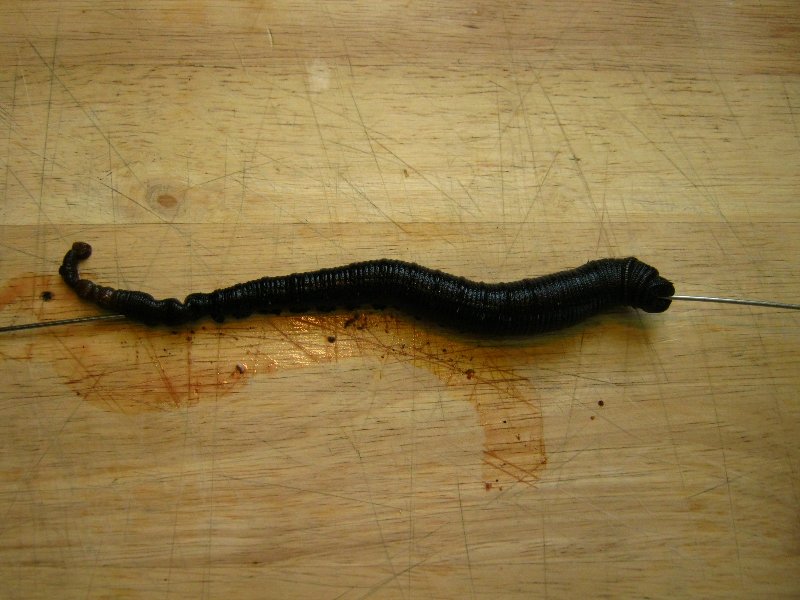
Place the hollow end of the needle over the point of the
hook.
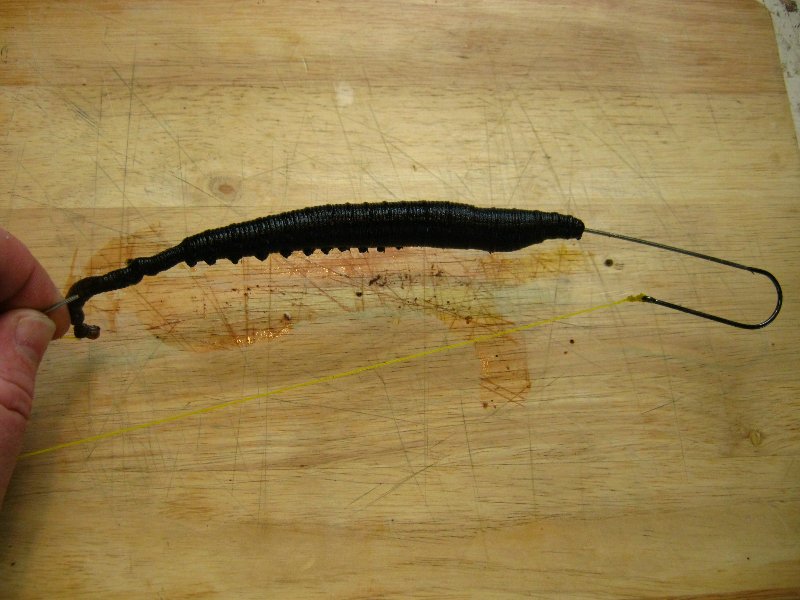
Now,very impotantly,keep tension on the line,pulling the
hook all the time into the hollow end and slide the worm down the needle and up and over the hook.
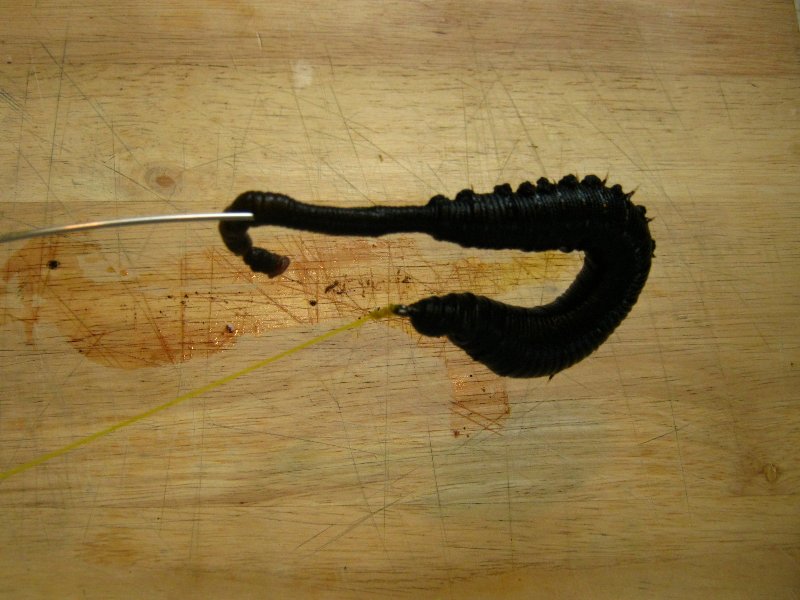
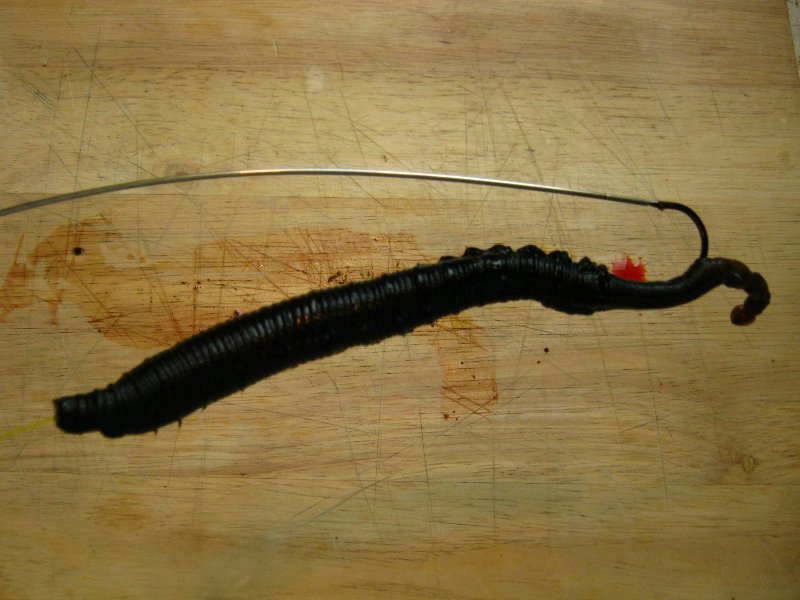
Your worm is now ready to cast. One large worm or several
small ones can be presented using this method.
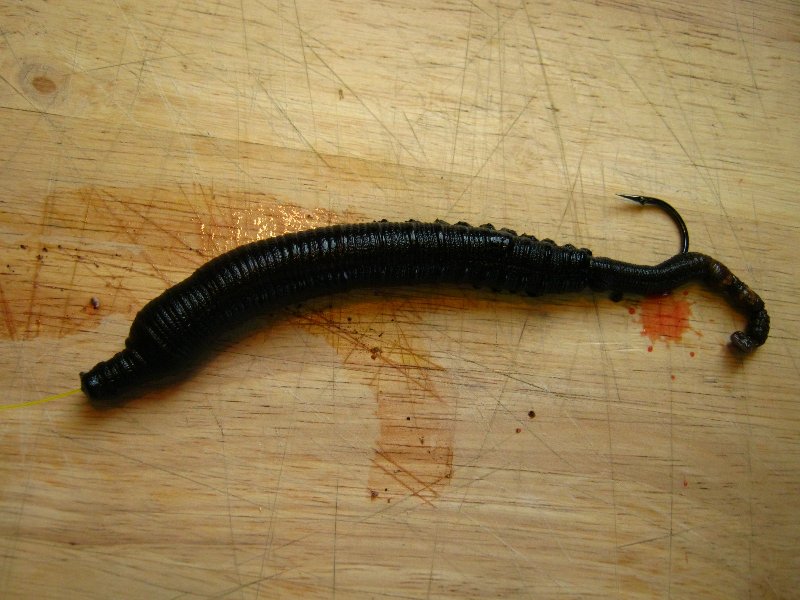
|

